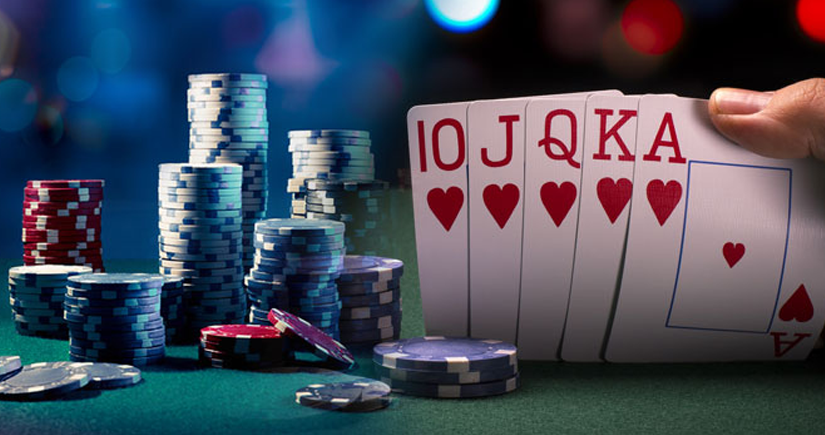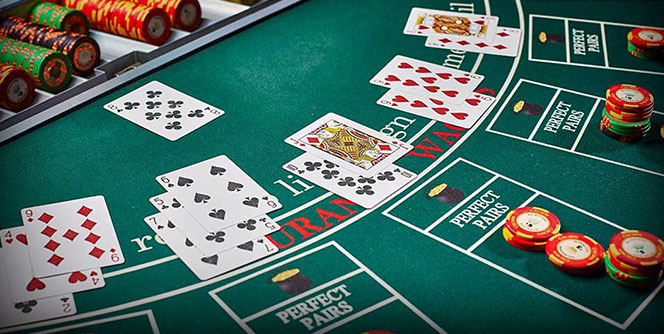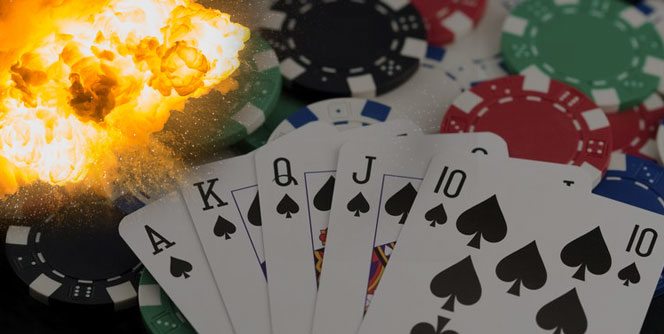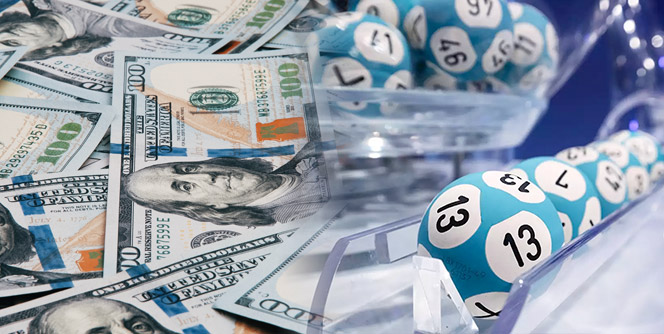Texas Hold’em is easily the most popular form of
poker played online and live in casinos and poker rooms across the globe. Its rise in popularity started in mid-2000s as a result of the infamous “Moneymaker effect“ and, since then to this very day, hundreds of thousands of people have learned to play the game.
Although most players play recreationally and don’t nurture the hopes of turning pro one day, winning always feels better than losing. Even if you just play at home with a group of your friends, you’d rather be on the winning side of things – even if just for the bragging rights.
If you’re making your first steps into the world of Texas Hold’em and are looking to learn the game, this up-to-the point guide will help you tremendously improve your game almost overnight. As someone who’s played poker for well over a decade with a decent degree of success, I’m fairly convinced these tips will help any novice player to dramatically improve their game.
It All Starts Before the Flop: Choose Your Hands Carefully
Like you certainly know, Texas Hold’em is played with two cards dealt face-down to each player at the table and five community cards. Those two cards you get are one of the most important elements that need to dictate your decisions. This doesn’t mean the game is all about who gets better cards – we all get similar cards in the long run – but it is what you choose to do with each and every hand.
General Hand Strengths in Hold’em
You’ll find many different strategy guides for Hold’em and they might categorize hands differently. The idea of this guide is to make things as simple as possible for novice players, however, so I’ll just put them in three different groups for the time being:
- Premium hands
- Speculative (medium-strength) hands
- Trash hands
Premiums
Premium hands are the kind of hands you’ll want to play pretty much every time for all of your chips. We’ll touch more on other strategic aspects later on, but, for now, keep in mind that these are the hands you’ll want to play pretty much always regardless of what happens:
- Big pocket pairs: Aces, Kings, Queens
- Ace King suited / Ace King off-suit
These are truly premium holdings in Texas Hold’em and whenever you’re dealt one of these hands, folding should be the last thing that comes to your mind. Of course, this is a very short list and you won’t get too many of these hands in any particular session or a tournament. When you do, however, you need to be thinking about extracting the maximum value out of them.
The important thing to know about these hands is that they play best against one or two opponents. The more players enter the pot, the worse your chances of winning get. So, with these hands, you should be looking to get as much money as possible in before the flop and push out as many players.
Middle Strength Hands
This is the widest category of hands, which could be broken down further, but, once again, we’re trying to keep it simple. Middle strength Hold’em hands are usually the ones where you don’t want to just put your chips in the middle before the flop because, when you do, you’ll usually be up against a better hand. Generally speaking, this category consists of:
- Other pocket pairs: 2s through Jacks
- Broadway cards (Ace Queen, King Queen, King Jack, Queen Jack – suited and off-suit)
- Suited connectors (like 67 of hearts, 89 of spades, etc.)
These are the kind of hands you’ll want to see the flop with but without investing too much money before the flop. This is beause these hands realize their value only after the flop. For example, pocket pairs can flop a set and crack premium holdings and broadway cards can give you a good top-pair types of hands.
Suited connectors are a very special category. These hands definitely have their place in the game but many novice players tend to overvalue them. The power of these hands isn’t just in making straights and/or flushes, but also in the possibility to move your opponent off the hand when you flop a good draw.
So, to properly play suited connectors, you’ll need some experience at the tables. It is usually a good idea to be very conservative with these hands early on and don’t get involved as much until you develop a good feeling for the game and understand some other considerations that come into play here.
Trash Hands
You may have seen players on TV play with all types of hands, pulling huge bluffs or getting lucky. And, while any hand can be played, there are certain hands that you should simply avoid as a new player. I decided to name them “trash hands” simply to emphasize playing them is usually a bad idea. Of course, as you get more experience, you can start including some of these hands, especially when stealing in position or defending your big blind, but don’t rush it.
For the purposes of this guide, trash hands are all hands containing small, unconnected cards, like 2 5, 7 2, 10 3, and a picture card with a weak kicker, like K 2, J 5, Q 6, etc.
Unsuited connected cards like 7 8, 9 10, or 10 J can be played and aren’t exactly trash hands, but if you’re inexperienced, they’ll usually get in trouble.
Understanding Importance of the Position
In Hold’em, there are several different positions at the table. Some of them are more favorable than the others and a good player needs to understand the importance of position in the game. For this guide, we’ll be looking into 9-handed games, because that’s where most new players start off.
There are following positions at the poker table:
- Small blind
- Big blind
- Early position – first three positions after the blinds (Under the Gun (UTG), UTG+1 & UTG+2)
- Middle position (MP)
- Hijack (sometimes also called MP+1)
- Cutoff
- Button (Dealer)
Your position at the table is directly connected to the type of hands you should and shouldn’t be playing. For example, from the early positions, you should mostly be sticking to premiums, especially during the early levels of the tournament or in a cash game. The deeper you are (the more chips you have relative to the blinds), more conservative you should be with your hands.
The logic behind this is quite simple, really. If you’re one of the first to act, you have no information about what other players have and if you try to play too many hands, you’ll likely run into better hands from the players yet to act. Worse yet, if you decide to call when they raise, they’ll have a position on you for the remainder of the hand, so you can really get in trouble.
As you move from the early position towards the middle position, you can start introducing more hands, especially if players before you have folded. This is where those broadway cards, smaller pairs, and suited connectors start go gain in value.
One thing to keep in mind about playing any hand is to always try to get in with the raise. If it is folded to you and you want to enter the pot, as a general rule you should raise, not just call. By raising, you’ll achieve two things:
- You’ll thing the field, so you’ll be up against fewer players
- You’ll take the control of the hand
So, if you’re in the hijack with pocket 6s, for example, don’t try to limp in and see what happens. Come in for a raise and take control of the hand. Sometimes, you’ll win the pot right there, without even having to see the flop. And, if you do get to the flop and it misses you, you’ll still have a good shot at winning the hand because you have the initiative.
Playing the Late Position: Power of the Dealer Button
Of all the positions at the table, the dealer button is the most powerful one. First and foremost, before the flop, you only have the big and the small blind to act after you, and those are players with two random cards. This gives you an opportunity to raise with a wide range of hands and attack the blinds.
Secondly, if you get called, you’ll always get to act last on the flop, turn, and river. So, you’ll be able to stay in control of the betting for the most part and other players will have hard time playing against you unless they have a really big hand.
On the button, you can open with pretty much all the hands that aren’t in the “trash” category if no one has raised before you. That way, you’ll be winning a lot of pots either before the flop or on the flop when they miss and you continue betting after they check to you.
Playing from the Blinds: Don’t Get Too Attached
In Hold’em, someone’s always in the blinds – they exist to generate action at the table and make players play instead of just sitting around and waiting for pocket Aces. When it is your turn to put the blind in, it can be difficult to simply give up and surrender “your” chips.
However, you shouldn’t think about blinds as your chips. Once you put them across that line, they are no longer your chips – they belong to the pot. Players will be attacking your blind just as you will be attacking theirs. Don’t get too attached and try to defend every single blind you put in or you’ll get yourself in trouble.
When you’re playing from the blinds, you’ll always be out of the position against other player(s), so that’s already a big disadvantage. If you also start doing it with weak hands, you’ll be setting yourself up for a loss.
Instead, be selective about the hands you decide to go to war with. Stick to strong holdings or medium strength hands with good potential – like pocket pairs that can flop a set. Playing marginal hands can get you in troubles because you’ll often hit a weak pair and it will be hard to continue in the hand out of the position and facing aggression.
Tight & Aggressive Still Works
When it comes to the style of play
, the tight-aggressive (TAG) style still works very well in most games. Play your premium hands fast and strong and make your opponents pay the price if they want to outdraw on you.
When you’re ready to take things a bit further, you can start expanding your range a bit according to your and your opponent’s position. For example, if somebody raises from the cutoff and you have a strong medium hand like Ace Queen, don’t be afraid to re-raise them. You know that they’re opening a lot of hands and you want to profit on your knowledge.
Basically, with a good hand selection and the right amount of position-aware aggression, you’ll be just fine in most tournaments and cash games, especially in the live setting where the level of play is still not that high, especially at the lower stakes.
Conclusion: Your First Step to Success
This short strategy guide is far from being your complete cheat-sheet to becoming the best Texas Hold’em player there is. However, these are some of the fundamentals that you need to keep in mind if you’re just starting. Applying these general concepts to your game should help you significantly improve your results.
There is much more to learn about the game and perhaps we’ll discuss some of these concepts in another blog. For the time being, though, stay smart about what hands you decide to play and don’t be afraid to put your chips in the middle when you believe you have the best hand!






Leave a Reply